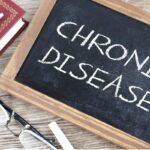An endoscopy is a commonly performed procedure that allows healthcare providers to examine the digestive tract for diagnostic or treatment purposes. After undergoing an endoscopic procedure, following specific recovery steps helps promote healing, minimize discomfort, and reduce the likelihood of complications. Here are a few tips for a smooth recovery, focusing on rest, diet adjustments, and managing post-procedure symptoms:
Understanding Rest and Activity
After an endoscopy, it’s common to feel groggy or tired due to the sedation or anesthesia used during the procedure. Rest is recommended for the remainder of the day. Avoid operating heavy machinery, driving, or engaging in physically demanding activities until the sedative has fully worn off, which typically takes 24 hours.
Light activity, such as walking around the house, is fine and can actually assist in preventing stiffness or soreness. While resuming normal activities is possible after the initial recovery period, listen to your body and avoid overexertion. If you feel any lingering fatigue or discomfort, take additional time to rest.
Exploring Diet and Fluid Intake
One of the aspects of recovery involves gradually reintroducing food and fluids. Sedatives and the procedure itself can temporarily affect the throat and digestive tract, causing mild discomfort when swallowing or eating. It’s best to start with small sips of water or clear fluids like herbal tea, broth, or electrolyte solutions. This helps hydrate the body without overwhelming the digestive system.
After several hours, light, easy-to-digest foods can usually be introduced. Examples include plain crackers, bananas, rice, or applesauce. Avoid spicy, fatty, or acidic foods during the first day, as these may irritate the stomach lining or esophagus. Caffeinated or carbonated beverages should also be avoided initially to reduce bloating or irritation. By the next day, most individuals can begin resuming a normal diet if they feel comfortable. If prescribed, follow any dietary guidance provided by the healthcare provider or facility to support healing.
Managing Common Symptoms
Certain symptoms may occur after an endoscopy, but usually resolve on their own within a short period. A sore throat is a common and temporary effect due to the equipment passing through the upper throat. Drinking warm fluids or sucking on ice chips can offer relief. Another common issue is mild bloating or gas, particularly if air was introduced into the stomach during the procedure. This can be alleviated with gentle movement or by lying on your side.
Pain or discomfort in the area examined during the procedure is generally mild. Over-the-counter pain relief medications, like acetaminophen, can be taken for minor aches unless otherwise directed by your doctor. Monitor your recovery process closely. While mild symptoms resolve quickly, certain warning signs may require medical attention. Contact your healthcare provider immediately if you experience severe abdominal pain, persistent nausea, vomiting (particularly with blood), chest pain, fever, or difficulty swallowing. These could indicate complications requiring evaluation.
Get an Endoscopy
A smooth recovery after an endoscopy involves proper rest, dietary adjustments, and managing mild post-procedure symptoms. Staying mindful of your activity levels and gradually reintroducing fluids and food allows time for your body to adjust and recover. While mild discomfort is normal, keeping an eye out for unusual symptoms can make sure you address any concerns promptly. For additional questions about recovery or if complications arise, get in touch with your healthcare provider.









